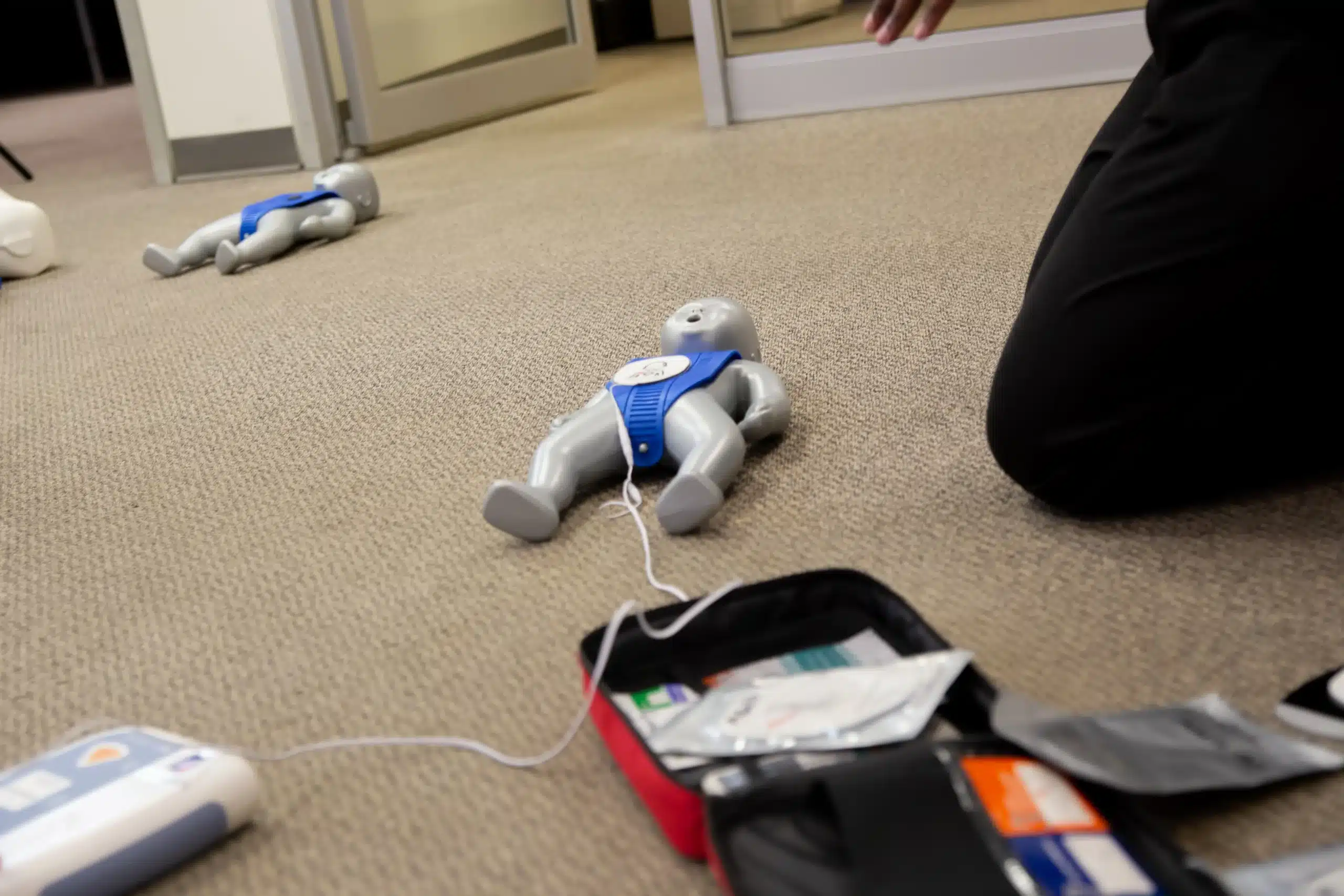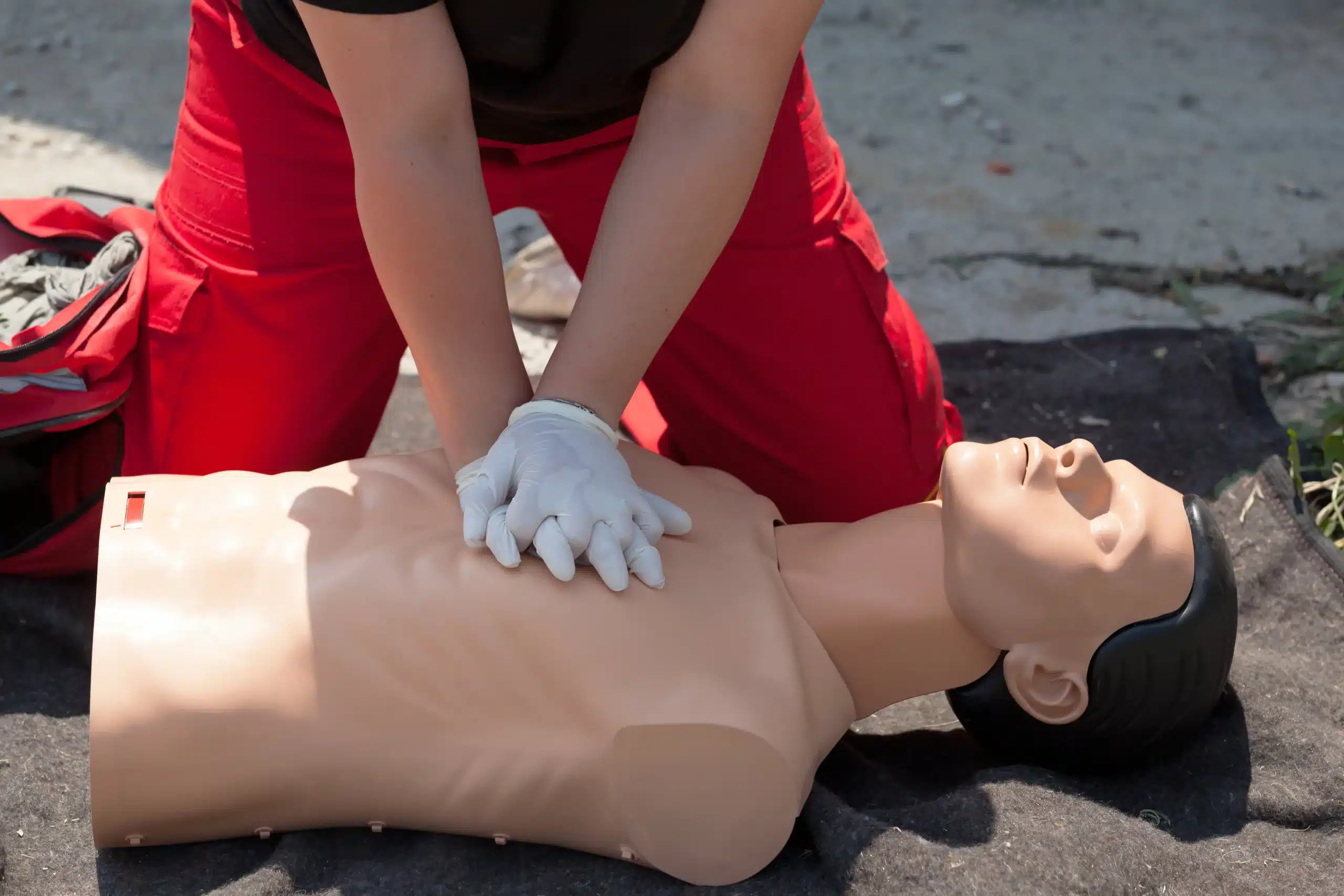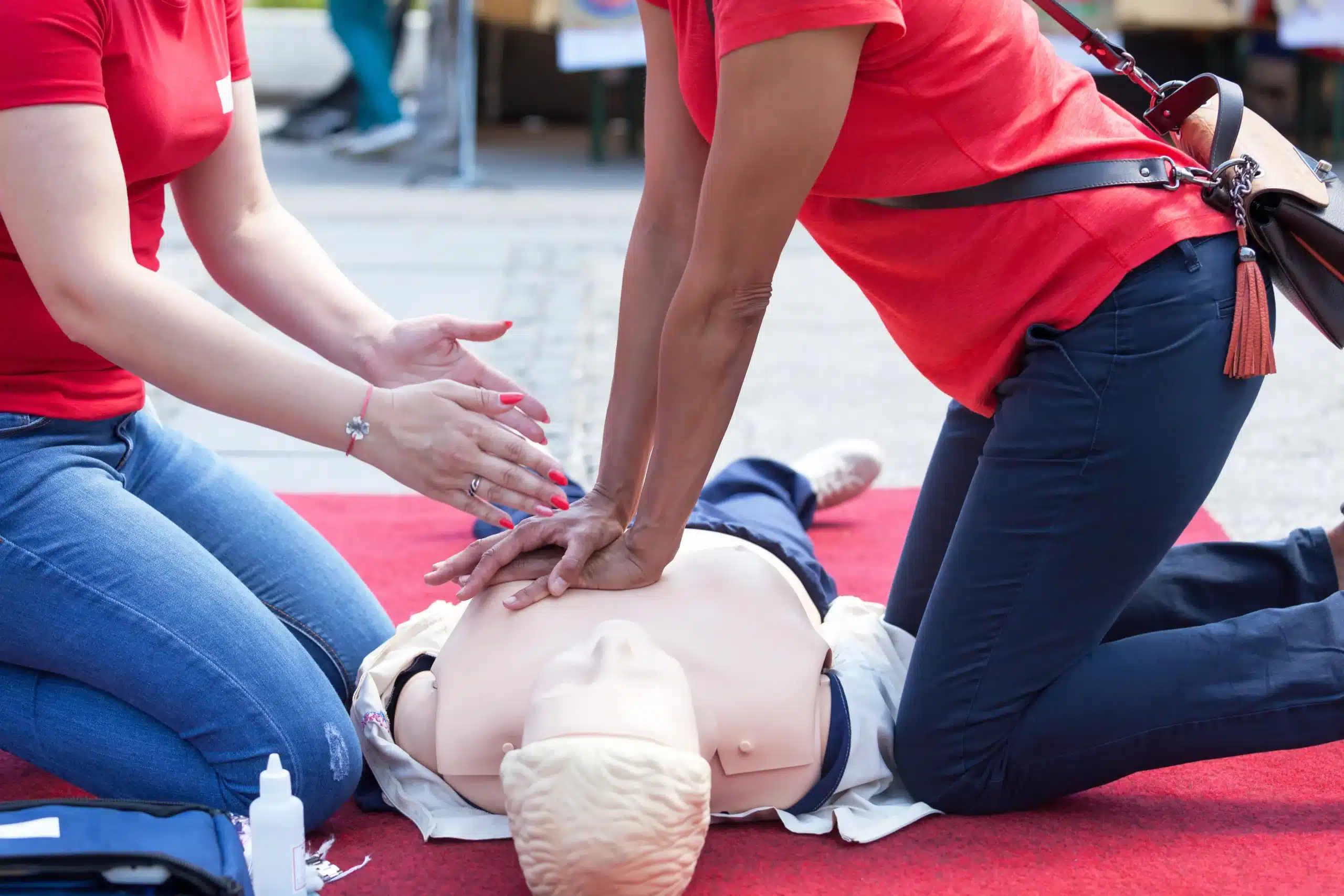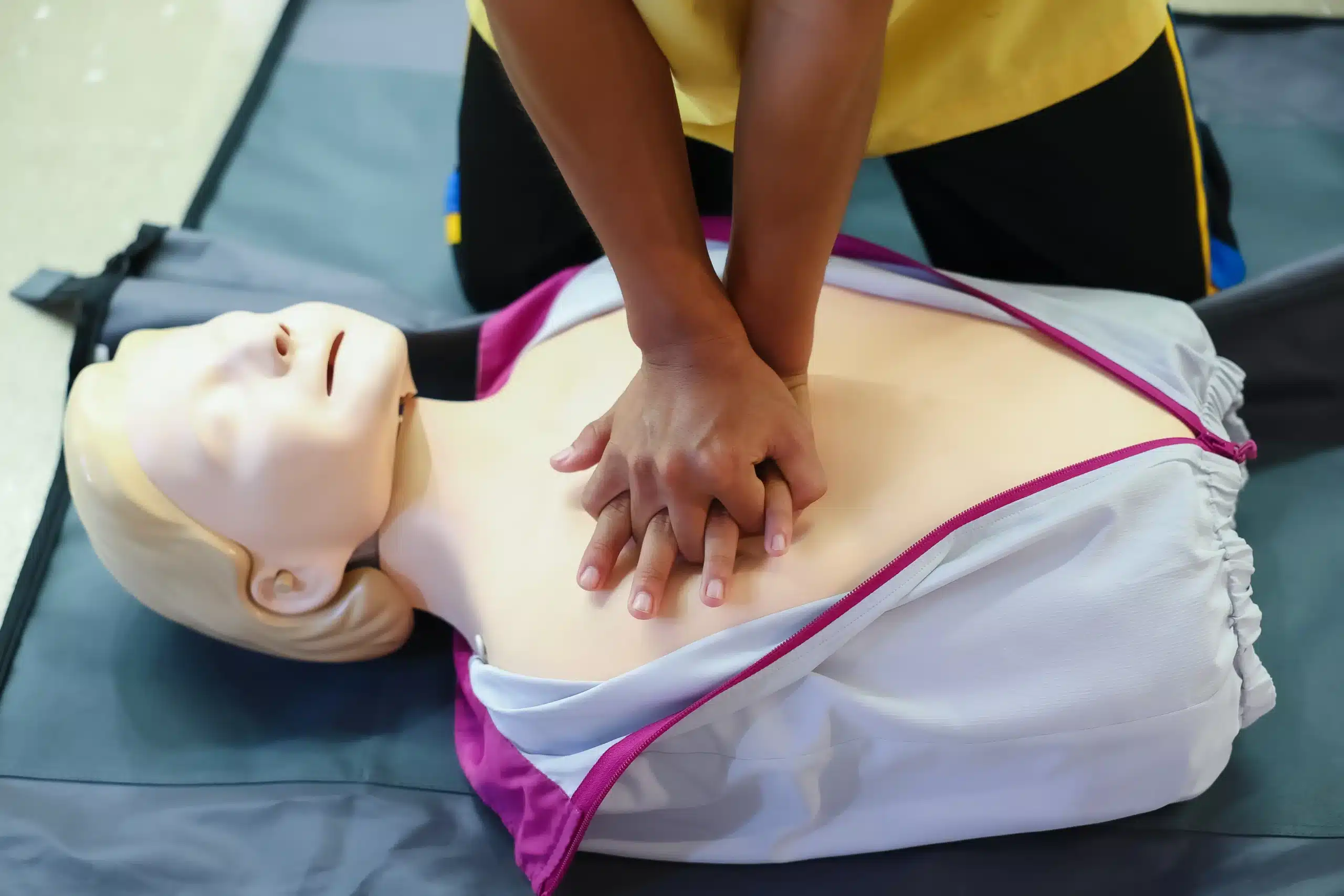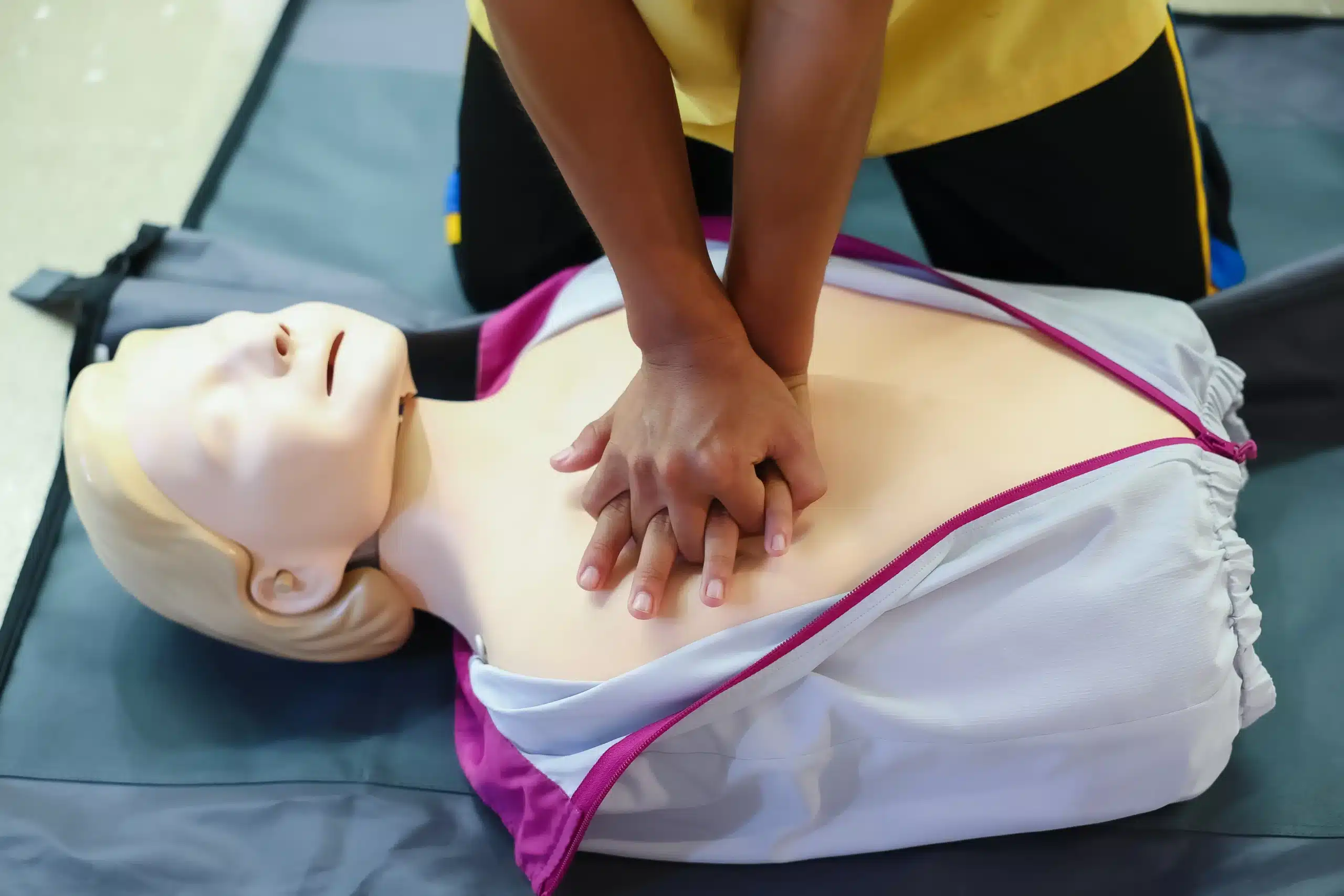Emergencies can happen anytime, anywhere, and knowing CPR can make all the difference. Online CPR classes in San Jose offer a flexible and convenient way to gain these essential skills, fitting around your busy schedule. This article explores the world of online CPR training in San Jose, guiding you through the process of choosing the right course and provider. We’ll cover the different types of online CPR classes available, the importance of hands-on practice, and how to ensure your certification is valid and recognized by employers. We’ll also discuss the costs and benefits of online learning, helping you make an informed decision. Whether you’re a healthcare professional, a parent, or simply someone who wants to be prepared, this guide will help you find the perfect online CPR class in San Jose.
Key Takeaways
- Combine online CPR training with hands-on practice: Online courses offer flexibility for learning the basics, but in-person skills sessions are essential for developing the muscle memory and confidence needed in real-life emergencies.
- Select a reputable provider for valid certification: Ensure your chosen online CPR course comes from a recognized organization like the American Heart Association or American Red Cross. This ensures your certification meets employer and licensing requirements.
- Maintain your CPR skills and certification: CPR certifications expire. Stay prepared by refreshing your knowledge and skills through renewal courses and regular practice. This ensures you’re always ready to respond effectively.
What are Online CPR Classes in San Jose?
Online CPR classes in San Jose offer a flexible way to learn life-saving skills. These courses often combine online learning with in-person skills assessments. This blended approach lets you study the theoretical part of CPR at your own speed, then demonstrate your practical skills in a real-world setting. Many organizations in San Jose provide this combined format, ensuring you meet all certification requirements and gain hands-on experience. For example, healthcare professionals can maintain their certifications through the American Heart Association’s RQI program, which offers a streamlined approach to BLS, ACLS, and PALS certification. Our BLS courses in San Jose follow this blended learning model.
It’s important to understand that while the online portion offers convenience, a practical component is usually essential for certification. The American Red Cross explains that online CPR courses typically involve an online theory section followed by an in-person skills assessment. This hands-on evaluation ensures you can effectively perform CPR techniques.
When considering online CPR training, choose a reputable provider. Not all online certifications are created equal, and some may not be accepted by employers or licensing boards. Premium CPR points out that fully online CPR certifications often lack the legitimacy of programs that include in-person skills checks. Major certifying organizations generally require a hands-on component for valid certification. So, while online learning is a great starting point, remember that practical training is key to becoming a truly confident and certified CPR provider. Look for programs that combine the convenience of online learning with essential hands-on practice. We offer a low price guarantee on our CPR courses.
Types of Online CPR Courses
Finding the right CPR class can feel overwhelming with so many options available. To help you decide, let’s break down the main types of online CPR courses you’ll find in San Jose.
Fully Online Courses
Fully online CPR courses offer ultimate flexibility. You can complete the coursework from anywhere, at your own pace. These courses typically involve video instruction, interactive exercises, and quizzes to test your knowledge. While convenient, it’s essential to choose a fully online CPR course from a recognized organization like the American Heart Association (AHA) or the American Red Cross to ensure your certification is valid. Keep in mind that while these courses provide a foundation in CPR principles, they may not offer the same level of hands-on practice as other options.
Blended Learning
Blended learning CPR courses combine online learning and in-person skills practice. You’ll work through the online modules at your convenience, covering the theoretical aspects of CPR. Then, you’ll attend a shorter, in-person session to demonstrate your skills and receive feedback from a certified instructor. This approach offers a good balance of flexibility and practical experience, making it a popular choice. Many providers in San Jose and the Bay Area offer blended learning, so finding a class that fits your schedule shouldn’t be difficult.
Specialized CPR Training
Beyond basic CPR certification, you can find online components integrated into more specialized training. For example, programs like the American Heart Association’s BLS, ACLS, and PALS courses often incorporate online modules to streamline the learning process. These specialized certifications are essential for healthcare providers and those working in specific fields. Check with your employer or professional organization to determine which certifications you need.
Top Online CPR Class Providers in San Jose
Finding the right CPR class can feel overwhelming, but several reputable providers in San Jose offer various options. Here’s a rundown to help you in your search:
Safety Training Seminars
Safety Training Seminars, a woman-owned AHA Training Center, offers a comprehensive range of courses, including BLS, ACLS, PALS, CPR, and First Aid. They prioritize excellent customer service and offer a low price guarantee, making them a strong contender for anyone seeking certification in San Jose, Santa Clara, and Sunnyvale. Check their schedule for upcoming BLS courses in Willow Glen. They also offer the American Heart Association’s RQI program for healthcare professionals. For childcare providers in California, they offer EMSA Health, Safety, and Lead Poisoning training.
American Red Cross
The American Red Cross is a well-known provider of CPR and First Aid classes in San Jose. Their courses are OSHA compliant, making them suitable for workplace requirements. They offer both in-person and blended learning formats (combining online learning with in-person skills sessions). Red Cross certification is valid for two years, and they offer renewal courses to maintain your credentials.
American Heart Association
While the American Heart Association doesn’t directly offer classes, they set the standards for CPR training. Many training centers, including Safety Training Seminars mentioned above, are AHA-certified. The AHA also offers the RQI program, a resuscitation quality improvement program for healthcare professionals. This program helps medical personnel maintain their BLS, ACLS, and PALS certifications.
Local Community Colleges
Local community colleges frequently offer CPR courses. Check the websites of colleges in your area, such as San Jose City College, Evergreen Valley College, and West Valley College, for their course offerings. These courses can be a good option for those seeking a more traditional classroom setting.
Other Reputable Training Centers
While numerous online-only CPR certifications exist, it’s crucial to ensure the provider’s legitimacy. Major certifying organizations like the American Heart Association, American Red Cross, and American Safety & Health Institute typically require a hands-on skills assessment, meaning fully online certifications might not be accepted by all employers. Always verify the accreditation and acceptance of a certification before enrolling.
What to Expect in an Online CPR Course
Online CPR courses offer a convenient way to learn lifesaving skills, but it’s important to understand what they entail before you sign up. This section covers the key aspects of online CPR training, from course content to the importance of supplemental hands-on practice.
Course Content and Structure
Online CPR courses typically use a modular format, breaking down essential CPR techniques, AED use, and first aid principles into digestible segments. You’ll learn how to recognize the signs of a cardiac arrest, perform chest compressions and rescue breaths, and use an AED safely. The American Red Cross offers more information on their CPR training. This self-paced structure allows you to learn at your own speed and revisit sections as needed.
Skills Assessment
Many online CPR courses, especially those aligned with organizations like the American Heart Association, incorporate skills assessments. For example, the BLS CPR Provider Skills Session often requires completing the AHA HeartCode® BLS Online Training, which includes a skills check. These assessments help ensure you understand the material and can apply it correctly. While online assessments can test your knowledge, they don’t replace in-person skills practice.
Time Commitment
One of the biggest advantages of online CPR training is its flexibility. Some basic programs, like those highlighted by the British Heart Foundation, can be completed in as little as 15 minutes. More comprehensive courses may require a few hours. The ability to learn at your own pace means you can fit the training around your schedule.
Hands-On Training
While online CPR courses offer a solid foundation in CPR knowledge, they often lack the crucial element of hands-on practice. In-Pulse CPR emphasizes the importance of on-site training for developing the muscle memory and confidence needed to perform CPR effectively in a real-life emergency. Consider supplementing your online training with an in-person skills session to gain practical experience and receive personalized feedback. Safety Training Seminars offers a variety of hands-on CPR training courses in San Jose, Santa Clara, and Sunnyvale. Learn more about our BLS courses in San Jose.
CPR Certification: Process and Validity
Getting CPR certified is straightforward, but staying on top of renewal requirements and employer expectations is key. This section breaks down everything you need to know about getting and maintaining your certification.
Get Certified: Steps
Ready to get started? First, find a CPR class that fits your schedule and learning style. Safety Training Seminars offers various options, including in-person and blended learning formats. Once you’ve chosen a class, simply register and complete the required coursework and skills testing. We make registration easy through our online enrollment system.
Certification Duration
CPR certifications are typically valid for two years. Keep track of your certification’s expiration date so you’re always ready to respond to an emergency. Mark your calendar or set a reminder so you know when it’s time to recertify. This helps you avoid any gaps in your qualification.
Renew Your Certification
To maintain your CPR skills and keep your certification current, you’ll need to take a refresher course before your current certification expires. Renewal courses cover the latest guidelines and techniques, ensuring you’re prepared to provide effective assistance. For healthcare providers needing to renew BLS skills, Safety Training Seminars offers the convenient RQI program through the American Heart Association.
Employer Recognition
While online CPR certifications offer flexibility, it’s essential to confirm whether your employer or prospective employer accepts them. Some organizations may prefer or require in-person training. Always check their specific requirements to ensure your certification meets their standards. If you’re a childcare provider in California, you’ll need specific training that meets state licensing requirements. Safety Training Seminars offers courses covering health, safety, and lead poisoning to fulfill these requirements. Don’t hesitate to contact us if you have questions about certification acceptance. We’re happy to help!
Costs & Discounts for Online CPR Classes
CPR certification is an investment in your skills and the well-being of your community. Understanding associated costs can help you budget effectively and find the best training option. Here’s a breakdown of what you can expect:
Average Prices
The average cost of a BLS (Basic Life Support) provider class in San Jose is around $70. This price typically covers course materials, instruction, and certification processing. For more details on BLS course pricing, visit our BLS course page. Prices can vary slightly between different training centers, so comparing options is always wise. We also offer the American Heart Association RQI program for healthcare professionals looking to maintain their resuscitation skills. You can learn more about the RQI program and its benefits on our RQI information page.
Group Discounts & Promotions
If you’re training a group, like colleagues or community members, ask about group discounts. Many CPR training centers in San Jose, including Safety Training Seminars, offer reduced rates for group bookings. This can be a cost-effective way to certify everyone together. Check our course calendar for upcoming courses and group discount information. We also offer specialized training, such as the EMSA Health, Safety, and Lead Poisoning course for childcare providers in California. Find more information and register for this important training on our EMSA course page.
Low Price Guarantees
At Safety Training Seminars, we believe cost shouldn’t prevent anyone from learning these vital lifesaving skills. Our low price guarantee ensures our courses are accessible to everyone in the community. Compare our prices with other providers—our commitment is to provide high-quality training at competitive rates.
Online CPR Class: Benefits and Drawbacks
Deciding between online and in-person CPR training? It’s smart to weigh the pros and cons of each approach before signing up. This section breaks down the benefits and drawbacks of online CPR classes to help you make an informed choice.
Advantages of Online Learning
Online CPR training offers a lot of flexibility. You can learn at your own speed and revisit material whenever you need a refresher. This self-paced format makes online learning a good fit for busy schedules and different learning styles. Plus, online access eliminates the need to commute to a physical classroom. This convenience is especially helpful if you have limited time or live far from training centers. If you’re looking for CPR classes in San Jose, Santa Clara, or Sunnyvale, online learning might be a convenient option.
Addressing Common Misconceptions
One of the biggest questions about online CPR training is whether the resulting certification is valid. Online CPR certification is legitimate if you choose a course from a recognized organization like the American Heart Association (AHA) or the American Red Cross. Always double-check the provider’s credentials before enrolling. While many employers accept online certifications, some may still require in-person training. It’s always best to confirm the specific requirements with your employer or the organization you’re hoping to work with. For healthcare professionals needing to renew their certifications, online options for the RQI program can be a convenient way to stay current. Our BLS course page offers more information about this important certification.
Importance of Hands-On Practice
While online CPR courses offer valuable knowledge and convenience, they can’t fully replace hands-on practice. CPR is a physical skill, and performing it effectively requires practice on manikins and feedback from a qualified instructor. Online-only training often lacks this crucial component. Think of it like learning to drive—you wouldn’t want to hit the road without some real-world experience behind the wheel. Similarly, supplementing your online CPR training with hands-on practice will give you the confidence and skills to respond effectively in a real emergency. Check out our BLS courses in San Jose for in-person training options. We also offer a low price guarantee, so you can get the best value for your training. For childcare providers in California, we also offer training on health, safety, and lead poisoning to meet state licensing requirements.
Choose the Right Online CPR Class
Finding the right online CPR class requires careful consideration of your specific needs and learning style. Let’s break down the key factors to help you make the best choice.
Assess Your Needs and Goals
Before you start searching for online CPR classes, ask yourself a few important questions. Why do you need CPR certification? Is it for your job, personal enrichment, or to meet specific requirements? Knowing your “why” will guide your search. For example, healthcare providers often require certification from nationally recognized organizations like the American Heart Association (AHA). If you’re unsure which type of certification you need, check with your employer or the organization requesting the certification. It’s important to confirm that the online CPR certification comes from a reputable organization like the AHA or the American Red Cross.
Compare Courses
Once you have a clearer picture of your needs, start comparing different online CPR courses. Look at factors like course content, format (fully online or blended learning), and the length of time it takes to complete the training. Consider whether you prefer a self-paced learning environment or a more structured approach with set deadlines. Also, check if the courses are available in your local area. For instance, if you live in San Jose, the Bay Area, or other nearby locations, you might find providers offering both in-person and blended learning options. A good provider will clearly outline the course requirements and what you can expect to learn.
Evaluate Provider Reputation
Choosing a reputable provider is essential for ensuring the quality and validity of your CPR certification. Do some research on different training centers and read reviews from past students. Look for providers with a strong track record of delivering effective training and excellent customer service. For example, Safety Training Seminars is a woman-owned AHA Training Center known for providing high-quality AHA courses in San Jose, CA. Consider factors like the provider’s experience, instructor qualifications, and overall reputation within the community.
Verify Accreditation
Finally, always verify the accreditation of the online CPR course and the certifying organization. Not all online CPR certifications are created equal. In fact, many online-only CPR certifications have questionable legitimacy. Major certifying organizations like the AHA, American Red Cross, and American Safety & Health Institute typically do not accept 100% online CPR training for certification. Make sure the certification you earn will be recognized by your employer or the organization requiring it. Check the provider’s website for information on their accreditation and affiliations. If you’re unsure, contact the certifying organization directly to confirm the validity of the certification.
Prepare for Your Online CPR Class
Getting ready for your online CPR class involves a little prep work. Thinking ahead about the technical side, gathering your study materials, and planning your study time will set you up for a smooth and successful learning experience.
Technical Requirements
Online CPR courses are typically delivered through a series of modules you can complete at your own pace. Before you begin, ensure you have a reliable internet connection and a device capable of streaming video, such as a laptop, tablet, or smartphone. Double-check that your device’s sound and video are working correctly. Some courses may also require specific software or plugins, so review the course requirements beforehand to avoid any last-minute technical issues. Safety Training Seminars clearly outlines technical requirements on their website.
Study Materials & Resources
While some online CPR courses provide all the necessary materials digitally, others may suggest supplemental resources. Check with your chosen provider to see if they recommend any specific textbooks, workbooks, or study guides. Having these resources can enhance your learning and provide additional opportunities for practice and review. You might also find it helpful to have a notebook and pen for taking notes or jotting down questions. The American Heart Association offers a variety of resources on their site.
Time Management Tips
One of the biggest perks of online CPR training is the flexibility. You can complete the coursework at your own pace, fitting it around your existing schedule. However, this flexibility also requires effective time management. Consider setting aside specific times each week dedicated to your training. Even scheduling short, focused study sessions can help you stay on track and complete the course efficiently. Treat these study sessions like any other important appointment to ensure you make consistent progress. This article on time management offers helpful tips for effective scheduling.
Make the Most of Online CPR Training
Online CPR training offers a convenient way to learn lifesaving skills, but it’s important to remember that online learning alone has its limitations. To maximize your online CPR training, consider these essential tips:
Supplement Online Learning with Practical Skills
While online courses cover essential CPR knowledge, they often lack the hands-on practice crucial for real-life emergencies. The ability to perform CPR effectively under pressure requires physical practice and feedback from a qualified instructor. Consider supplementing your online training with in-person skills sessions. Safety Training Seminars offers BLS courses in San Jose that provide the hands-on experience you need to confidently apply your knowledge. This combination of online learning and practical training provides a well-rounded approach to CPR education. As experts point out, relying solely on online CPR training can be a poor investment without the crucial component of hands-on practice.
Stay Updated on Current Guidelines
CPR guidelines and best practices evolve with ongoing research and medical advancements. Staying current with the latest recommendations is vital for providing effective care. Ensure your chosen training program, whether online or in-person, adheres to the most recent guidelines from reputable organizations like the American Heart Association. Regularly reviewing updated resources will help you maintain your skills and knowledge.
Practice and Maintain Your Skills
CPR is a perishable skill. Even after completing a certification course, regular practice is essential to maintain proficiency. Consider refresher courses or practice sessions to reinforce your learning and keep your skills sharp. Remember that most online CPR certifications have an expiration date, typically within two to three years. Plan to renew your CPR certification before it expires to ensure you’re always prepared to respond effectively in an emergency. Staying up-to-date with the latest guidelines and regularly practicing your skills will help you confidently provide assistance when needed.
Related Articles
- Free CPR Classes in San Jose, CA – San Jose CPR Classes
- CPR Certification San Jose: Your Complete Guide – San Jose CPR Classes
- HeartCode BLS Santa Clara: Your Certification Guide – San Jose CPR Classes
- American Heart Association Course Preparation | San Jose CPR
- Why CPR is Crucial in Saving Lives
Frequently Asked Questions
Are online CPR certifications accepted in San Jose?
Yes, online CPR certifications are generally accepted in San Jose, but it’s essential to choose a course from a recognized organization like the American Heart Association or the American Red Cross. Many employers also prefer certifications that include a hands-on skills assessment component, so a blended learning approach (online coursework plus in-person skills practice) is often the best route. Always confirm with your employer or licensing board to ensure your chosen certification meets their specific requirements.
What’s the difference between fully online and blended learning CPR courses?
Fully online CPR courses offer maximum flexibility, allowing you to complete all coursework remotely at your own pace. Blended learning courses combine online modules with an in-person skills assessment session. While fully online courses offer convenience, blended learning provides the crucial hands-on practice and feedback from a certified instructor, making it a more comprehensive option.
How long does it take to complete an online CPR course?
The time commitment for online CPR courses varies. Some basic online programs can be completed in as little as 15 minutes, while more comprehensive courses may take a few hours. Blended learning courses typically involve a shorter in-person skills session after you’ve completed the online modules. The self-paced nature of online learning allows you to fit the coursework around your schedule.
How much do online CPR classes cost in San Jose?
The cost of online CPR classes in San Jose varies depending on the provider and the type of course. Basic online courses might be more affordable, while blended learning courses, which include in-person skills sessions, may have a slightly higher price tag. Look for providers like Safety Training Seminars that offer a low price guarantee and group discounts. It’s always a good idea to compare prices and check for any available promotions before enrolling.
How can I make the most of my online CPR training?
To truly benefit from online CPR training, supplement it with hands-on practice. While online courses provide valuable knowledge, they don’t replace the experience of performing CPR on a manikin under the guidance of a certified instructor. Look for blended learning courses or supplemental in-person skills sessions to develop the muscle memory and confidence needed to respond effectively in a real-life emergency. Also, remember to stay updated on the latest CPR guidelines and refresh your skills regularly.


